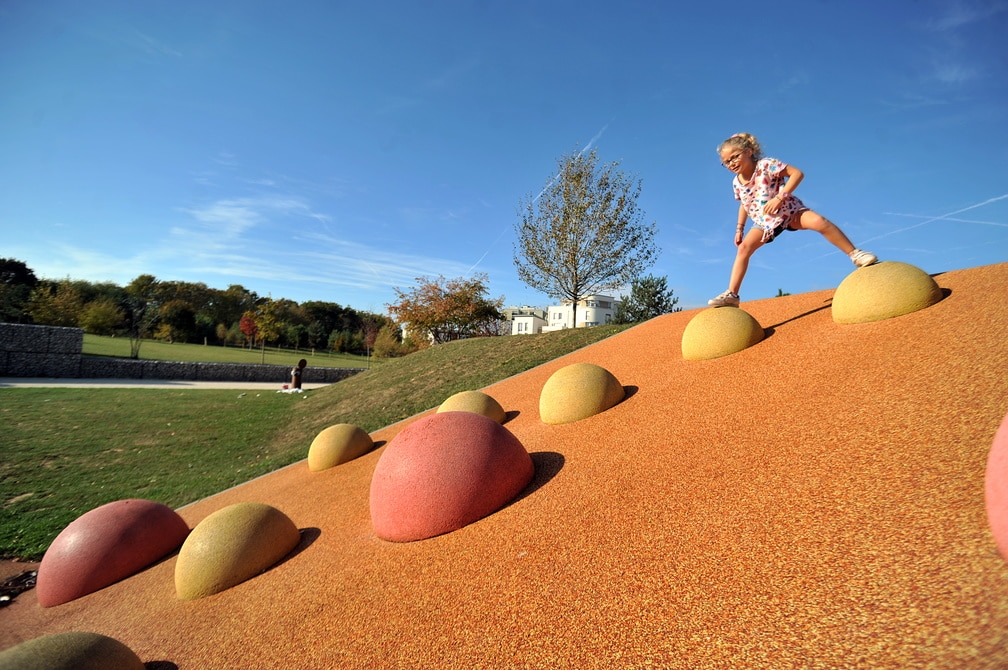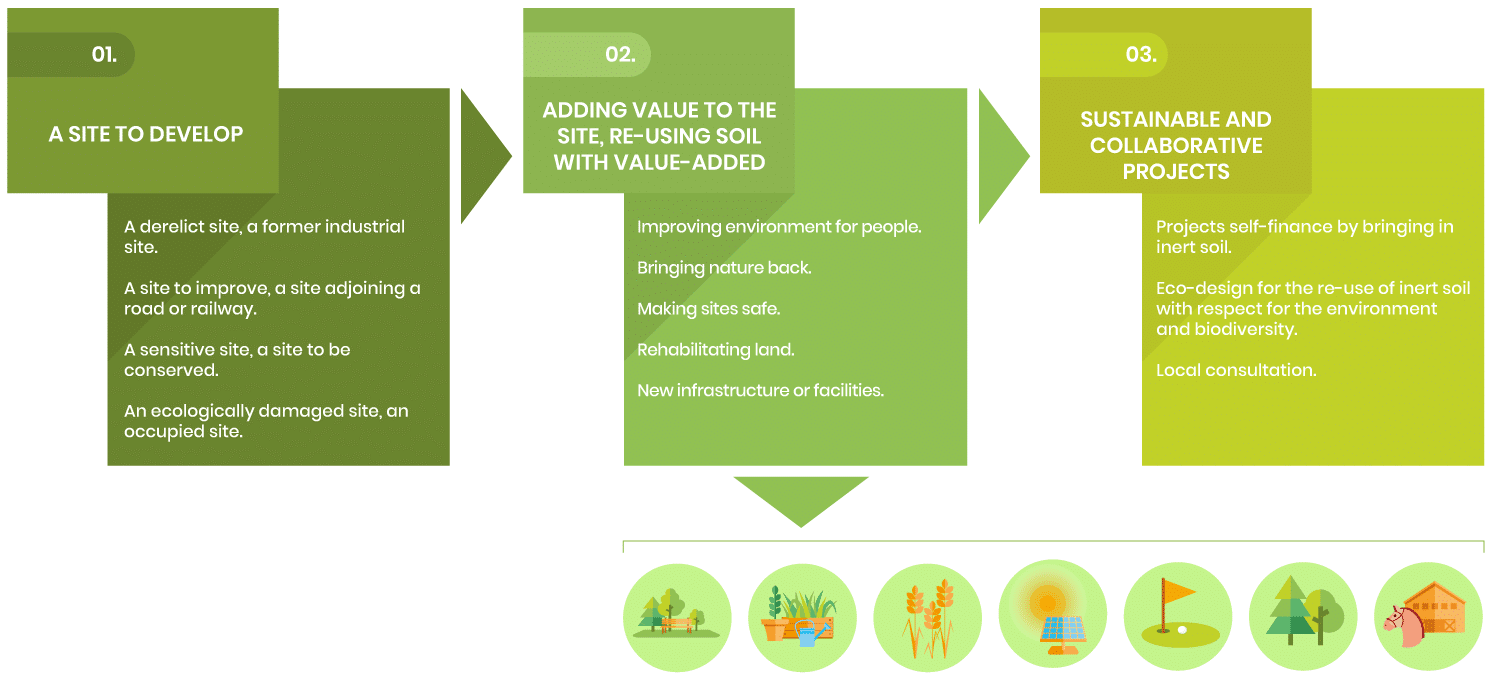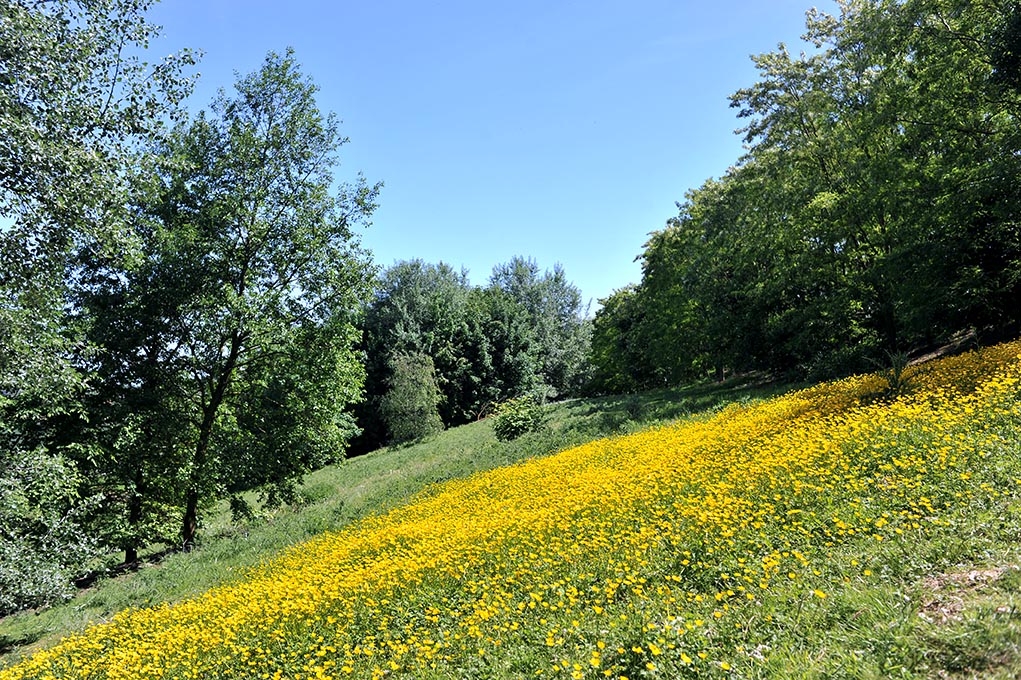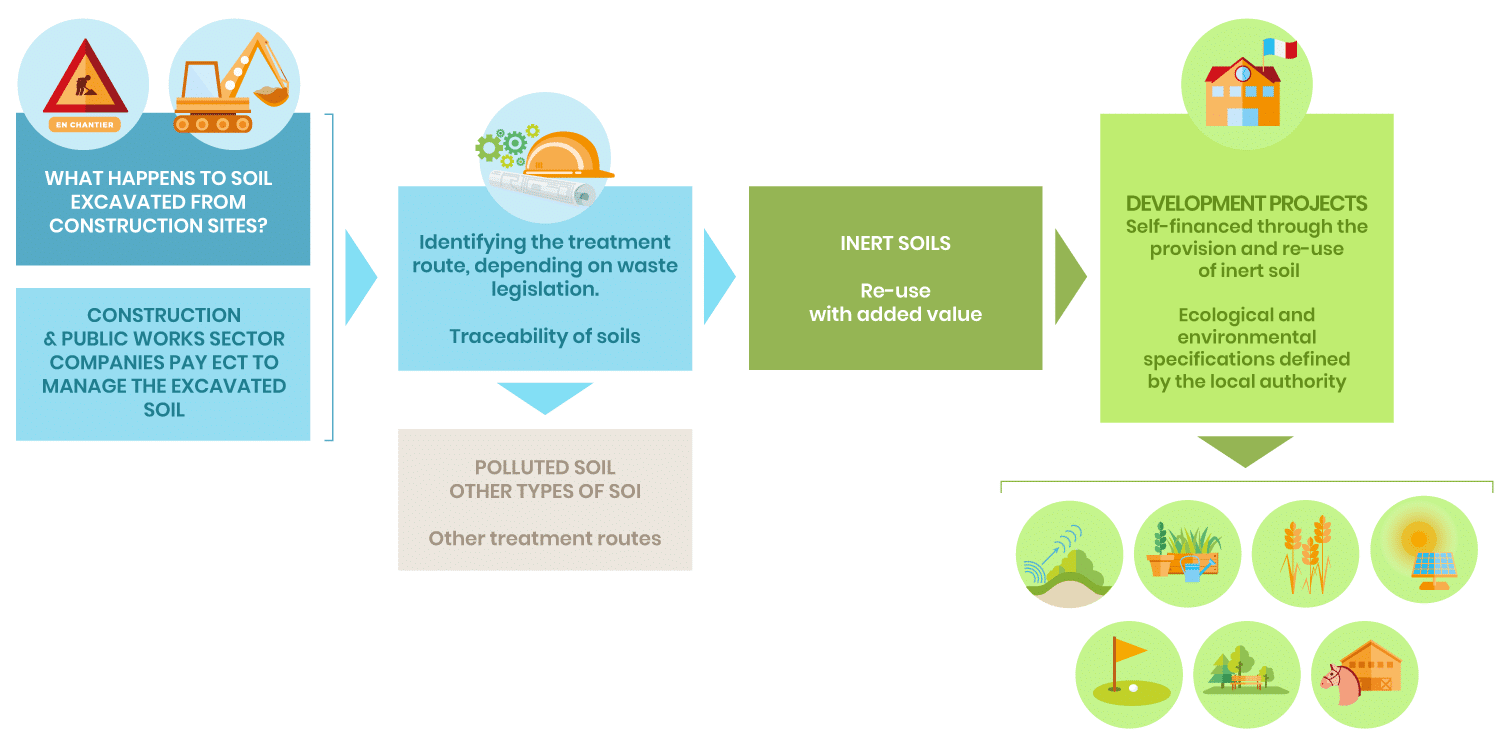ECT engages with communities and local authorities. The objective is to come up with land-use development projects that are both useful and collaborative. This value-added for a region has three key stages:
ECT's development division discusses these with communes in the Île-de-France region. Together, they identify the local issues for the sites to be (re)developed. These might be:
How? By re-using inert soil excavated from construction sites in the Île-de-France.
These land-use development sites become zones for the direct re-use of soil according to the principles of 'circular economy'. (Circular economics involves maximum recycling with the minimum addition of raw materials, water and energy, as opposed to the extraction-manufacture-consumption-disposal model of linear economics.)
The implementation of ECT development solutions makes it possible to meet the needs of towns and their residents.
For example:
Installing solar energy parks.
Usually, these land-use development projects fulfill several objectives, thus responding to the diverse aspirations of local people and the community's need for green spaces and non-built infrastructure.

ECT puts about 13 million tons of inert spoil to work in this way every year. All our land-use developments are carried out under prefectural decrees or development licences issued by departments of the state.
Giving a second life to soil excavated from the sites of the construction & public works sector allows ECT to engage with communities and local authorities, and to work with them to develop self-financing projects that add value to the local region.
The involvement of all stakeholders is a key factor in the success of the developments. That's why ECT organises consultations to let local bodies define the exact scope and functions of the project.
Communication about the project is of fundamental importance, to keep local people informed about the plans for the development and their progress.
ECT works with the communes, and develops a working set of tools and content aimed at the various groups of interested people, in partnership with local government.


Bringing in soil pays for the costs of development. These are sustainable developments that promote the conservation of biodiversity.
This makes it possible to develop sites that are ecologically damaged, derelict or dangerous. These projects are not an expense for the local authority, but an opportunity.


